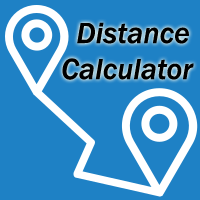Distance from Scottsbluff, NE, USA to Great Lakes, North Chicago, IL, USA
There is driving distance between and .
There is estimated duration to reach destination.
Distance Conversions
Here is the distance in miles, and kilometers between and
| Distance type |
Miles |
Kilometers |
Nautical Miles |
| Driving distance |
|
|
|
| Straight distance |
|
|
|
About Scottsbluff, NE, USA
Scottsbluff, Nebraska
Scottsbluff is a city in Scotts Bluff County, in the western part of the state of Nebraska, in the Great Plains region of the United States.
Scotts Bluff National Monument
Scotts Bluff National Monument in western Nebraska includes an important 19th-century landmark on the Oregon Trail and Mormon Trail.
Scottsbluff Micropolitan Statistical Area
The Scottsbluff Micropolitan Statistical Area, as defined by the United States Census Bureau, is an area consisting of two counties in Nebraska, anchored by the city of Scottsbluff.
Scottsbluff Public Schools
Scottsbluff Public Schools, located in Scottsbluff, Nebraska, United States, is the largest school district in Scotts Bluff County.
Scottsbluff Army Air Field
About Great Lakes, North Chicago, IL, USA
Great Lakes
The Great Lakes (French: les Grands-Lacs), also called the Laurentian Great Lakes and the Great Lakes of North America, are a series of interconnected freshwater lakes located primarily in the upper mid-east region of North America, on the Canada–United States border, which connect to the Atlantic Ocean through the Saint Lawrence River.
Great Lakes Megalopolis
The Great Lakes Megalopolis consists of the group of metropolitan areas in North America largely in the Great Lakes region and along the Saint Lawrence Seaway.
Great Lakes Field Service Council
The Great Lakes Field Service Council is a field service council of the Michigan Crossroads Council, a local council of the Boy Scouts of America.
Great Lakes Storm of 1913
The Great Lakes Storm of 1913, historically referred to as the "Big Blow," the "Freshwater Fury," or the "White Hurricane," was a blizzard with hurricane-force winds that devastated the Great Lakes Basin in the Midwestern United States and the province of Ontario in Canada from November 7 through November 10, 1913. The storm was most powerful on November 9, battering and overturning ships on four of the five Great Lakes, particularly Lake Huron.
Great Lakes tectonic zone
The Great Lakes tectonic zone (GLTZ) is bounded by South Dakota at its tip and heads northeast to south of Duluth, Minnesota, then heads east through northern Wisconsin, Marquette, Michigan, and then trends more northeasterly to skim the northern-most shores of lakes.


